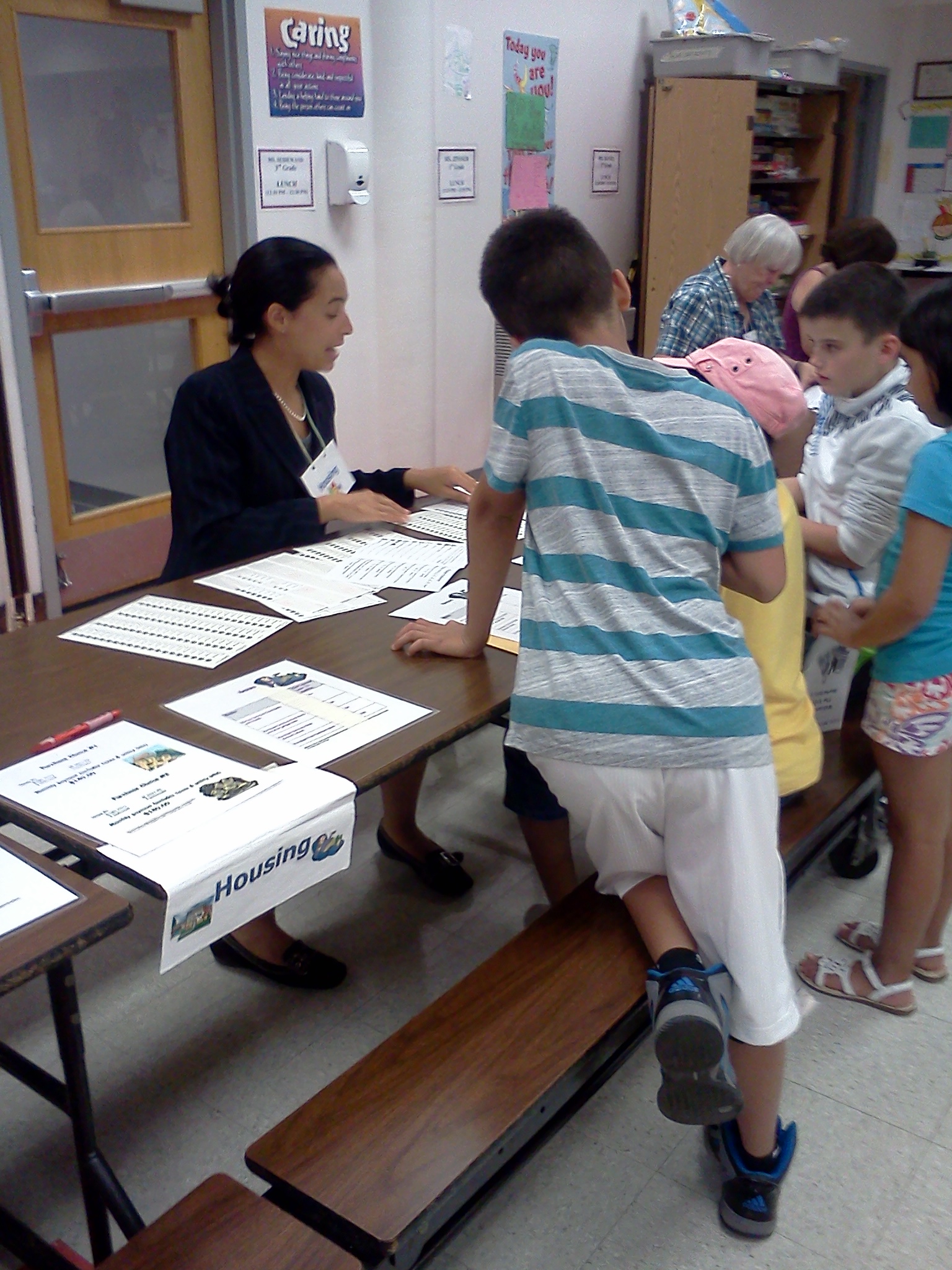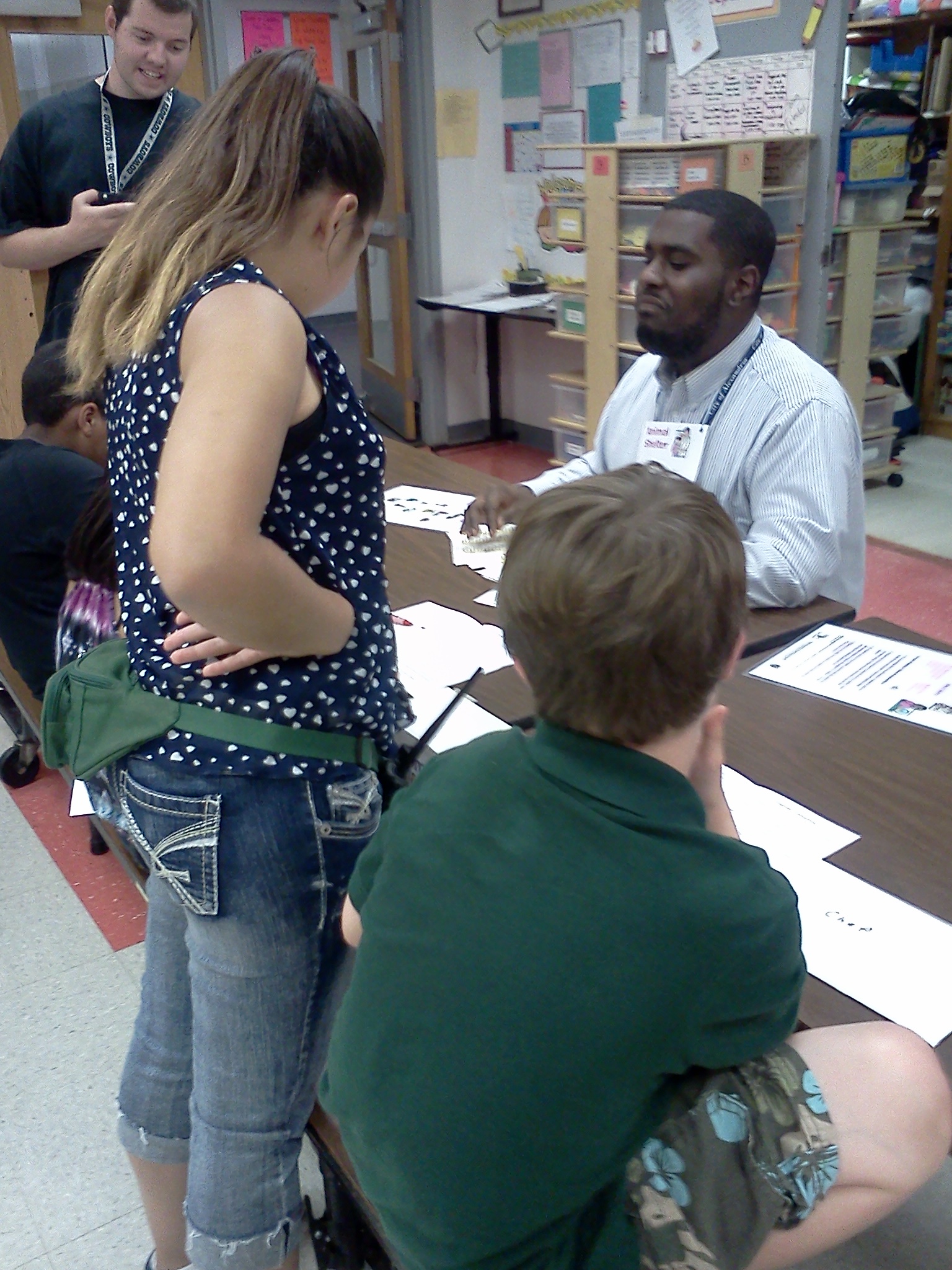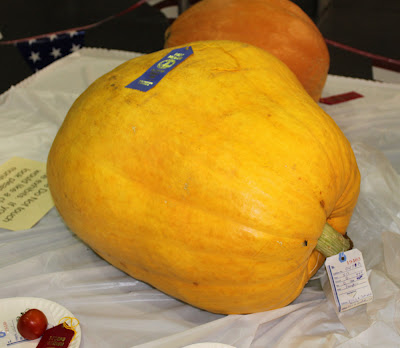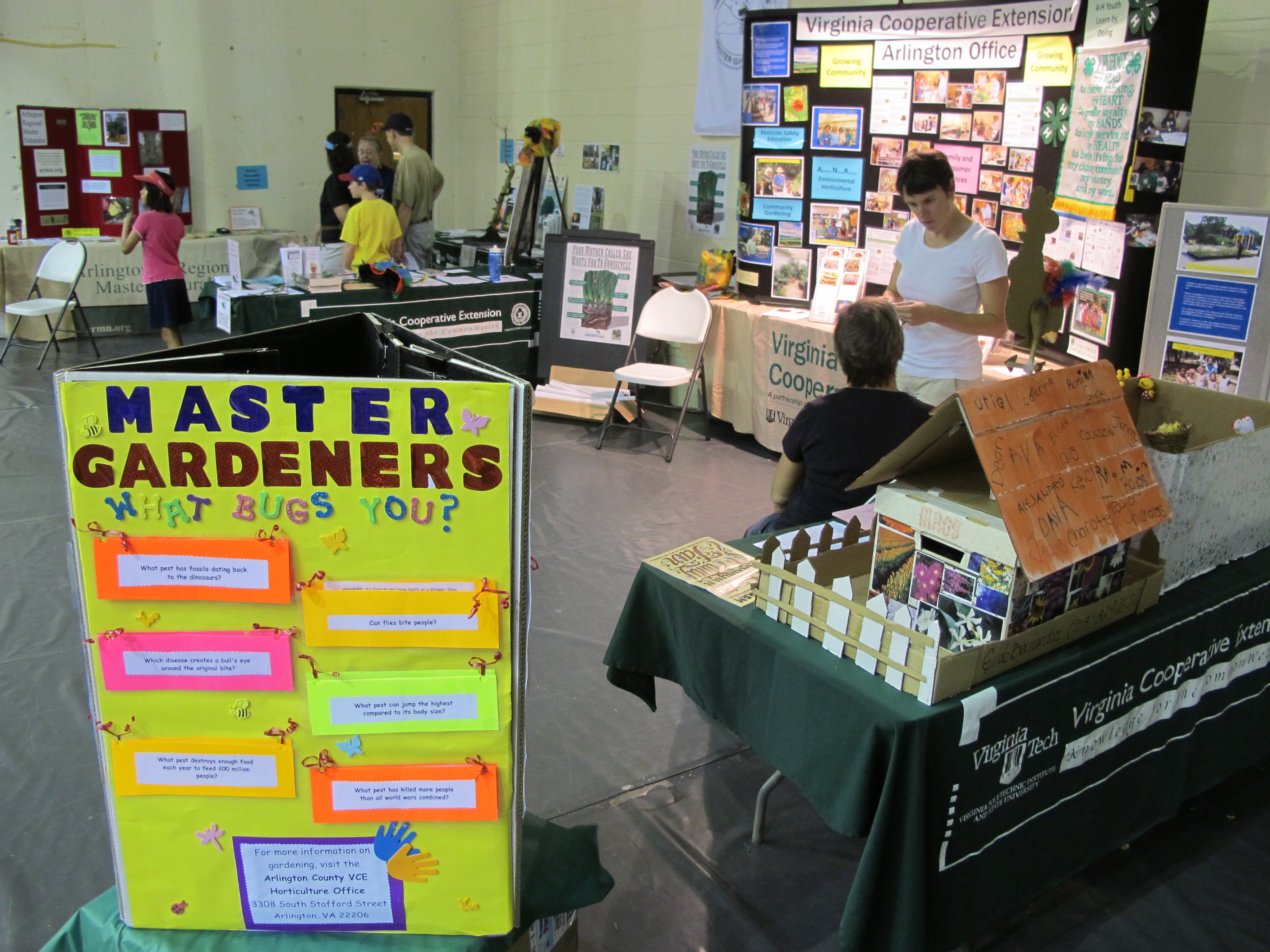A few weeks ago Reggie and myself were out at out annual Junior 4-H Camp which is held at the Northern Virginia 4-H Educational Center in Front Royal, Virginia. Our camping cluster is Fairfax County, Arlington County, and the City of Alexandria, which means that those three VCE units send campers for the same week. Lenah Nguyen, the Fairfax 4-H Extension Agent, Reggie, and I were had at work through out the summer getting ready for this wonderful week of camp.
This year, camp had a theme of “Disney!” with our spirit days and camp events all in the Disney spirit.

Our camp shirt designed by one of our counselors, Alexia!
Each day started bright and early with a delicious breakfast. After everyone was pleasantly full, campers went off to their 3 classes. These classes included archery, canoeing, outdoor cooking, outdoor living skills, high and low ropes course, Counselor in Training, weird science. outdoor sports, fishing, arts and crafts, swimming, and so much more!

Robotics Class programming their robots

Archery class shooting at some targets

Fishing class learning how to cast a rod

Weird science class shooting off film canister rockets

Canoeing class out on Lake Culpeper
After classes everyone was definitely ready for lunch! The afternoon program was immediately after lunch. This was put on by the summer staff members while the counselors had their teen time. The rest of the afternoon consisted of free recreation time and swim time which were very popular events for everyone – time to just relax and have fun!

Lunch in Molden Hall

Afternoon program with summer staff member Shark Bait

Afternoon program fun with summer staffers Chimp and Pandora

Campers having fun in the ‘ool (We call it that because there’s no “P” in the pool!)

Campers playing basketball during rec time

Camper showing off some awesome cannonball skills during swim time
And every night we had an evening program where all of the campers were together having a great time. Sunday night we were scheduled to have Nemo’s Pool Party, but unfortunately that didn’t happen because of rain. But we did a fun photo scavenger hunt instead.

Product of the photo scavenger hunt
Monday night was Cinderella’s Ball, and crafts/games/rec time for those who just didn’t feel like getting their groove on. Campers danced the night away upstairs, while downstairs there was gau-gau pits, card and board games, and summer staff member Hawkeye even had the x-box Kinect Adventures up and running!

Everybody conga!

Intense game of gau-gau downstairs from the dance

Having a blast at Cinderella’s Ball!
Tuesday night was our Lightning McQueen Camp Olympics! Packs competed in relay type events to see who came out on top! The event culminated in the Piston Cup – a relay race in which each pack designed and created a “chariot” that everyone had to take out for a lap. These chariots showed some amazing creativity and imagination from our campers, I was truly impressed. Unfortunately I do not know who the winning pack was – but everyone displayed great teamwork skills and had a great time!

Pool Noodle Spinning Relay

Getting ready for the Piston Cup!

Hula-Hoop Relay!

And they’re off! Packs racing in the Piston Cup
And our last evening program was the talent show! We had several AMAZING acts from all three counties. We were treated to fantastic singers and dancers, fabulous performances of the “Cups Song”, a stand-up comic, some amazing soccer skills, and even a mime! All of the campers who got up on stage have such great talent and made it a fun evening for everyone!

Some of our amazing talent show acts
After our evening programs, it was time to start winding-down, and we had our nightly campfire. This is not the type of campfire where we sit around roasting marshmallows and making smores, much to some peoples disappointment. Our campfire is a time to reflect on the day, gain some insight into tomorrow, and we even sing a few songs, but most importantly is we have a great time! Each day during pack meetings, the packs would come up with a chant or song unique to them which they would perform at campfire that night. The camp summer staffers usually concluded the campfire with vespers – lessons to take away from camp and into your life away from camp. And on our final night of campfire, the summer staffers performed the ever popular “If I weren’t a staffer…” song.

Campfire Circle

Packs having fun during campfire

One of the packs presenting a song during campfire

More campfire fun with summer staffer Melody
But sadly the week had to come to an end on Thursday. But it was a great week of camp, and we cannot wait for next year!! If you want to see more pictures from the week, visit Arlington4H on instagram!
If this sounds like something you/your children would enjoy – registration will start in early March!
And we had an amazing group of teen counselors this year. We hope to have them all return next year, but we are always looking for more outstanding teens to join us at camp! If you will be 13 by March 1, 2014, you are eligible to be a Counselor-in-training. If you will be 14 or older by January 1, 2014, you are eligible to be a teen counselor at camp. If this sounds like something you or your teen would be interested in – the application will be available around winter break.







 the Vegetable Fruits and Nuts Competitive Exhibits at the Arlington County Fair are supported by VCE Master Gardeners who serve as superintendents, judges, and administrative volunteers. This year, Extension volunteers will preside over two shows that take in entries from hundreds of exhibitors vying for blue ribbons and maybe even a Reserve or Grand Champion awards. Last year’s show inspired this entry from Nabih S. whose pumpkin was a huge hit. How big was it? Well it took two people to pick it up and the small tomato in the lower left corner will give an idea of its size.
the Vegetable Fruits and Nuts Competitive Exhibits at the Arlington County Fair are supported by VCE Master Gardeners who serve as superintendents, judges, and administrative volunteers. This year, Extension volunteers will preside over two shows that take in entries from hundreds of exhibitors vying for blue ribbons and maybe even a Reserve or Grand Champion awards. Last year’s show inspired this entry from Nabih S. whose pumpkin was a huge hit. How big was it? Well it took two people to pick it up and the small tomato in the lower left corner will give an idea of its size. 



























